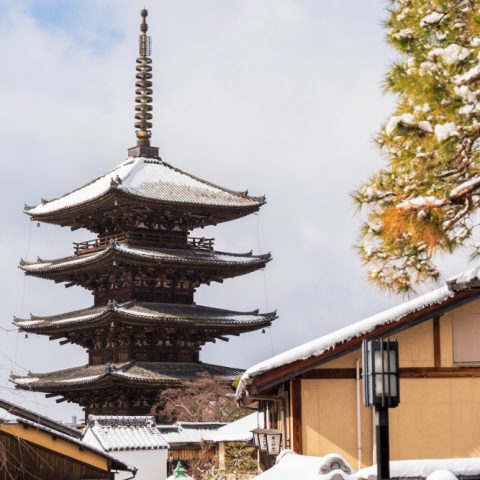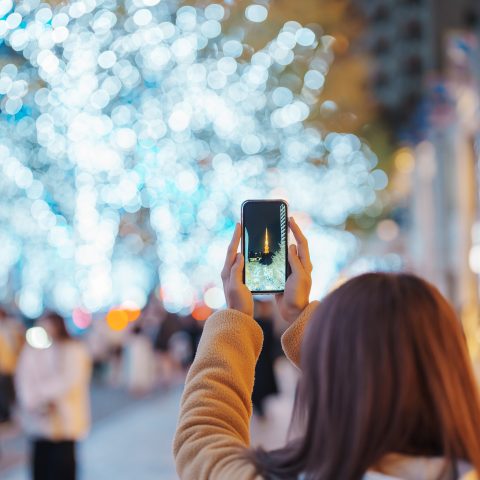
Visitors to Kyoto City may be surprised by the popularity of mackerel (saba鯖) in the local cuisine. Generally, saba is not viewed as a delicacy, but it holds a special place and importance in the rich culinary history of Japan’s historic capital. This surprise is only exacerbated if you happen to hike through the mountain villages of northern Kyoto prefecture and stumble upon ancient looking soba noodle shops advertising their saba dishes. “How did an ocean-dwelling fish climb this mountain?” you might wonder.

The peaks of northern Kyoto are crisscrossed with roads and trails that wind through valleys and over mountain passes to Fukui Prefecture and the Japan Sea. Since at least the Heian Period (794-1185), the mountain passes have connected the imperial capital to the port of Obama City, which was a hub for marine goods and imports from Korea and China. Due to high demand from Kyoto and an abundance in the local waters, saba became the major good for transport. Eventually, the whole network of trade routes came to be known as the Saba Kaido (kaido 街道 usually translates to “old road”). Even now, the Saba Kaido is an important part of Kyoto culture that provides the former capital with fresh mackerel.
The Historic Saba Kaido
During the reign of the imperial court, the many domains expected to pay tribute. Areas such as Wakasa (roughly modern-day Fukui Prefecture), that were lush with food sources, offered minie (御贄food for the imperial court) and were known as miketsukuni (御食国). The sheltered and relatively warm waters around the port of Wakasa located in Obama City were abundant in marine products, including saba.
The Saba Kaido does not refer to one road (kaido 街道 means “old road”). Instead, it refers to any route that connected Obama and Kyoto. Also, saba was not the only product that was transported; other marine products, rice, and art also made their way to the capital. In practice, there were five main routes that made up what came to be known as “the Saba Kaido”. Heavier goods were often taken east to the north tip of Lake Biwa (modern Shiga Prefecture) and shipped down the lake. The shortest, but not easiest, route mainly fell to human power. This left the Wakasa Kaido (which travels down the Kutsuki Valley of Shiga and ends in Demachiyanagi, Kyoto) as the best option for the short shelf-life of the saba.
Every evening, the daily catch of saba would be submerged in a bucket of brine solution (salt and water) and carried on the backs of men and horses through the more-than-70-kilometer Wakasa Kaido in a single night (but with a Saba Kaido Prime™ membership). The brine was necessary to preserve the freshness of the saba as well as provide some flavoring. Even so, saba (as well as most seafood) has a very short shelf-life. Thus the marathon pace of the men and horses was important to ensure that the fish was still edible and appealing upon arrival at Demachiyanagi the following morning. As a bonus, It is said that the over-night delivery was the perfect amount of time for the brine to properly season the saba. Upon its arrival, the lightly-salted flavoring was perfect for raw sushi or a quick grilling. that the trail was perfectly timed to allow the salt mixture to be absorbed by the fish and maximize their flavor upon arrival in the capital.
The Saba Kaido today
Salted mackerel holds a dominant position in the local cuisine to this day–though most of the transportation is done with trucks and not sandal-clad runners. Most commonly, the fish is eaten in the traditional ways: as sabazushi (raw mackerel atop rice with a piece of kelp) or as yakisaba (lightly salted mackerel, grilled on a wooden skewer over a charcoal fire). It is also common in soba noodle dishes and donburi (rice bowls). A quick inquiry to Google-sensei will come up with an abundance of restaurants serving saba in downtown Kyoto. Many places specialize in saba dishes and are guaranteed to be delicious, but almost any sushi joint will have it for a reasonable price and good flavor.
As mentioned above, the actual trade routes are still maintained, with the more accessible paths becoming paved roads throughout the years. Busses from Kyoto station can take tourists and hikers along most of the Wakasa Kaido to the market in Kutsuki, Shiga. Alternatively, a little more than an hour on the train can take you to Obama City and the historical start of the Saba Kaido, where there are many restaurants and museums. The trails that have not become roads are still used for hiking and sightseeing. There’s even an ultramarathon that runs the whole route each year. The Saba Kaido is so loved that pop artist, Iwasa Misaki, wrote a song about it!
Experience the Saba Kaido
Of course, if you’ve got the time, equipment, and stamina, the best way to experience the Saba Kaido is to hoof it! But even if you don’t have the energy for the 70km Ultramarathon of the Harihatagoe (針畑越え), you should at least taste the saba’s fishy goodness. Take the Keihan Line to Demachiyanagi Station, then head west, over the river to the Demachiyanagi Market Street (demachiyanagi shoutengai), a covered arcade with many shops and restaurants. On the way, you will pass a small obelisk marking the terminus of the Saba Kaido. If none of the shops on the street are to your liking, Hanaore, a saba specialty restaurant (sharing its name with a major mountain pass of the Wakasa Kaido), is a short walk away. There are also shops throughout the city that specialize in saba from Obama City. Tamuracho is particularly famous. You can buy canned saba, sabazushi, or other specialty goods and gifts from their shop in the Takashimaya department store, basement level 1, in Shijo, Kyoto.


Traveling to Kyoto? Join our delicious 3-hour food tours for an unforgettable experience!



